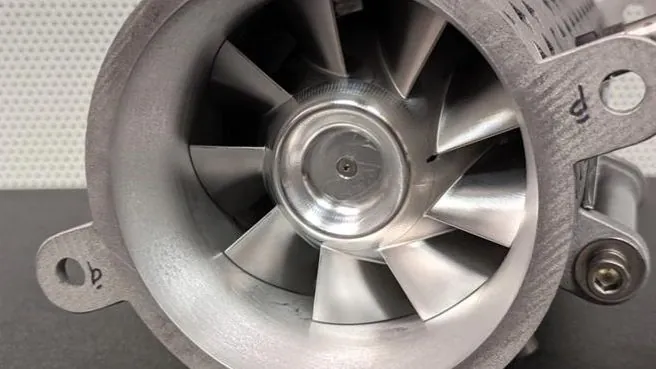
NASA's Revolutionary Quiet Space Fan: The Game-Changer for Astronaut Comfort!
2024-11-07
Author: Wei
Introduction
Living aboard the International Space Station (ISS)—which is remarkably similar in size to a five-bedroom house—can be a challenging experience. Imagine spending months in a confined space 250 miles (402 kilometers) above Earth, where the realities of limited privacy and zero-gravity living constantly test your patience. However, one aspect that often gets overlooked is the incessant noise.
The Need for Quiet
On the ISS, the constant drone of fans is essential for maintaining life support systems and keeping instruments operational. But over time, this ambient noise can become overwhelmingly intrusive, providing no refuge for the crew. Recognizing the need for quieter environments, NASA researchers have recently unveiled an innovative solution: the Quiet Space Fan. This groundbreaking design aims to minimize the noise levels in crewed spacecraft and is poised to transform the way astronauts experience life in orbit.
Design Focus and Benefits
The design focus of the Quiet Space Fan is on noise reduction at the source. By implementing this advanced technology, NASA anticipates a host of benefits—improved communication among crew members, quicker awareness of alarms, and a lower risk of hearing damage. Angela Hart, manager of NASA's Commercial Low Earth Orbit Development Program, emphasizes the agency's commitment to enhancing future space environments. “This research is just one example of how we collaborate with private companies to develop new destinations in space,” she shared.
Development Journey
The journey to create this quiet fan began at NASA's Glenn Research Center in Cleveland in 2009. The prototype initially designed for the fan showcased impressive acoustic characteristics, resulting in it being approximately 10 decibels quieter than conventional commercial fans of similar sizes. Fast forward to today, and the latest iteration of this fan has been dramatically upgraded. The new model is designed to handle twice the airflow and pressure compared to its predecessor. To illustrate, where the initial prototype could ventilate a large vehicle, the new fan can effectively provide airflow for an entire house!
Advantages Discussed
Chris Allen, manager of NASA's Acoustics Office, highlighted the numerous advantages that the Quiet Space Fan brings: “By reducing noise, we can also save space and weight on spacecraft, minimize system pressure loss, lower power consumption, and meet essential acoustic requirements necessary for a safe and comfortable living environment for astronauts.”
Conclusion
Simply put, this advancement not only enhances the comfort of astronauts during critical missions but also pushes the boundaries of what space travel can be. As commercial space stations become an integral aspect of future exploration, NASA's Quiet Space Fan could pave the way for a more livable and efficient experience in the cosmos.
In an age where comfort during spaceflight is paramount, the Quiet Space Fan marks a significant leap forward, proving once again that innovation in technology can shape the future of human space exploration. Buckle up—the future of space travel is becoming quieter and more comfortable!




 Brasil (PT)
Brasil (PT)
 Canada (EN)
Canada (EN)
 Chile (ES)
Chile (ES)
 España (ES)
España (ES)
 France (FR)
France (FR)
 Hong Kong (EN)
Hong Kong (EN)
 Italia (IT)
Italia (IT)
 日本 (JA)
日本 (JA)
 Magyarország (HU)
Magyarország (HU)
 Norge (NO)
Norge (NO)
 Polska (PL)
Polska (PL)
 Schweiz (DE)
Schweiz (DE)
 Singapore (EN)
Singapore (EN)
 Sverige (SV)
Sverige (SV)
 Suomi (FI)
Suomi (FI)
 Türkiye (TR)
Türkiye (TR)